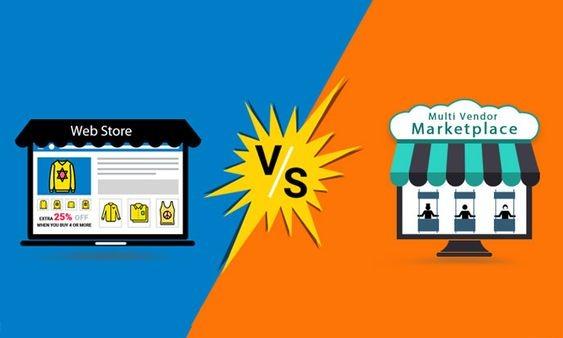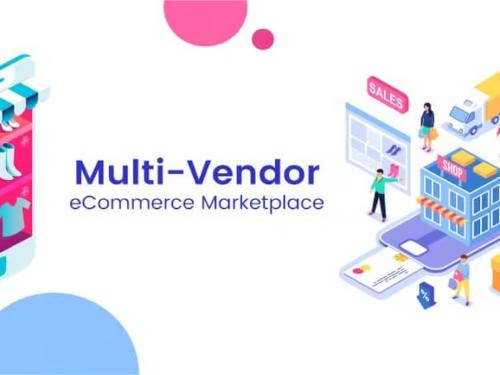Single Vendor VS Multi-Vendor: Which One Should You Choose For Dropshipping?
Single Vendor VS Multi-Vendor: Which One Should You Choose For Dropshipping?
|
As e-commerce continues to grow and expand, many entrepreneurs are turning to dropshipping as a means of starting their own online business. Dropshipping allows individuals to sell products without actually holding inventory or shipping the products themselves. Instead, the dropshipper partners with a supplier who takes care of these tasks. There are two main types of dropshipping models: single vendor and multi-vendor. In this article, we will compare and contrast these two models, helping you determine which one is best for your dropshipping business.

Single Vendor DropshippingSingle vendor dropshipping involves partnering with one supplier to source all of your products. This supplier will handle all of the product storage, shipping, and customer service. Single vendor dropshipping is ideal for those who are just starting out and want to keep things simple and straightforward. With only one supplier to work with, there is less risk of confusion and less room for error. Additionally, working with one supplier makes it easier to establish a strong and reliable relationship. One of the key benefits of single vendor dropshipping is that it allows for greater control over product quality and customer service. Since you are only working with one supplier, you can ensure that all of the products you sell are of a high quality and that your customers receive the best possible service. This can be particularly beneficial for businesses that sell unique or specialized products, as it ensures that the supplier is familiar with the product and can provide knowledgeable and helpful customer service. Another advantage of single vendor dropshipping is that it can be less expensive. Since you are only working with one supplier, you don't have to pay fees to access a multi-vendor marketplace. Additionally, if you establish a strong relationship with your supplier, you may be able to negotiate better pricing and shipping rates.
Multi-Vendor DropshippingOn the other hand, involves partnering with multiple suppliers to source your products. This model allows you to offer a wider range of products to your customers and can be ideal for businesses that sell a large number of products. With multi-vendor dropshipping, you can offer a wider range of products and cater to a wider range of customer needs. Additionally, by working with multiple suppliers, you can minimize the risk of stock shortages and ensure that you always have products available to sell. One of the key benefits of multi-vendor dropshipping is the ability to access a wider range of products. By working with multiple suppliers, you can offer a wider range of products to your customers and cater to a wider range of customer needs. Additionally, by working with multiple suppliers, you can reduce the risk of stock shortages and ensure that you always have products available to sell. Another advantage of multi-vendor dropshipping is the ability to access a larger customer base. By partnering with multiple suppliers, you can reach a wider audience and tap into new markets. Additionally, by working with multiple suppliers, you can tap into their existing customer base and reach new customers who are already familiar with their products. Despite these benefits, there are some potential downsides to multi-vendor dropshipping. One of the biggest challenges with this model is managing the relationships with multiple suppliers. Since you are working with multiple suppliers, it can be difficult to keep track of inventory levels and customer service issues. Additionally, working with multiple suppliers can make it harder to ensure consistent product quality and customer service across all of your products. Another potential drawback of multi-vendor dropshipping is the cost. In order to access a multi-vendor marketplace, you may need to pay fees or commissions to the marketplace platform. Additionally, you may also need to pay fees or commissions to each of your suppliers, which can add up and reduce your profit margins.Single Vendor vs Multi-Vendor: Which One is Right for You?Ultimately, the choice between single vendor and multi-vendor dropshipping depends on your business needs and goals. Here are some factors to consider when making your decision:Product RangeIf you want to offer a wide range of products to your customers, multi-vendor dropshipping may be the best choice. On the other hand, if you want to focus on a narrow range of specialized products, single vendor dropshipping may be more appropriate.ControlIf you want more control over product quality and customer service, single vendor dropshipping may be the better choice. With only one supplier to work with, you can ensure that all of your products are of a high quality and that your customers receive the best possible service.CostSingle vendor dropshipping is generally less expensive than multi-vendor dropshipping. However, you may be able to negotiate better pricing and shipping rates if you establish a strong relationship with your supplier.ComplexityMulti-vendor dropshipping can be more complex than single vendor dropshipping. You will need to manage relationships with multiple suppliers and ensure that all of your products are of a consistent quality.ConclusionIn a short, both single vendor and multi-vendor dropshipping have their pros and cons. When deciding which one is right for your business, it's important to consider your business needs and goals, as well as the potential benefits and drawbacks of each model. By carefully weighing the pros and cons of each model, you can make an informed decision and choose the best option for your dropshipping business. |
«
Return to Elecraft
|
1 view|%1 views
| Free forum by Nabble | Edit this page |

